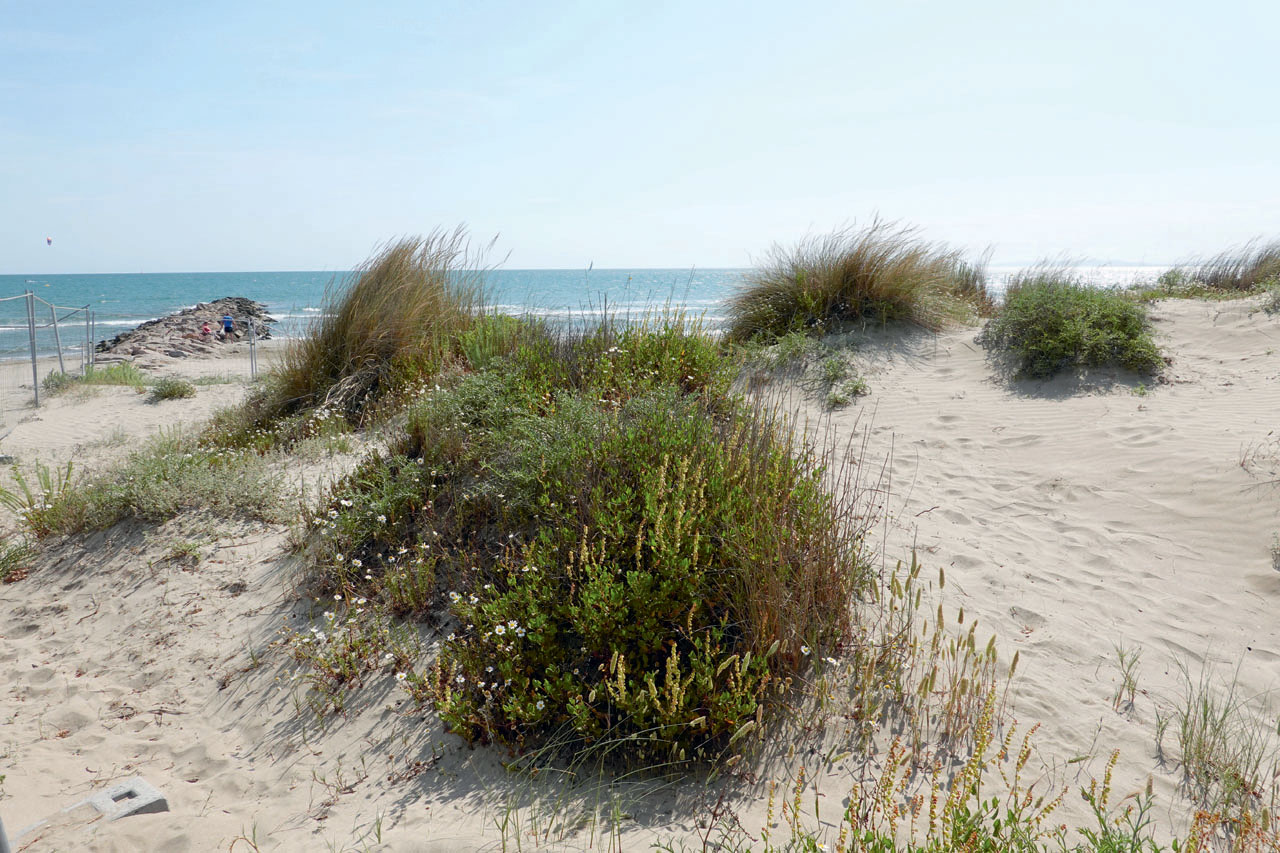The future beach institute
In Grau-du-Roi, the former Boucanet helio-marine center will soon be home to the Institut des Beaches Gladys.

On the site of the Grau-du-Roi heliomarine center, formerly attached to the Nîmes University Hospital, the ballet of earth-moving machinery starts at 7 a.m. "We've got to keep up the pace to meet our deadlines! " We've got to keep up the pace to meet our deadlines," comments Frédéric Bouchette, as the opening of the future Institut des Beaches Gladys is scheduled for late 2020 - early 2021.
Last May, Frédéric Bouchette, a researcher at Géosciences Montpellier(UM-CNRS-Universitédes Antilles) and future Scientific Director of the Institute, gave a guided tour of the renovation and fitting-out work on the building destined to house the Gladys network of researchers (see box). " Initially, we were simply looking for a strategically located storage facility suited to our research equipment", explains Frédéric Bouchette.
Multiple missions
From 2020, vehicles (trailers, boats, jet-skis, quads), measuring equipment (current meter, wave gauge, pressure meter, turbidimeter) and other state-of-the-art equipment - which Gladys network researchers currently store in their own garages - will be centralized at the Institut des plages. "Under the concerted impetus of the Occitanie region and theUniversity of Montpellier, the mission of the Institut des plages will extend far beyond the simple storage of equipment," explains Frédéric. As a future rallying point for the abiotic coastal scientific community and the research network's partner companies, the Institute is set to become the new North Mediterranean showcase for the study of coastal dynamics, starting in 2021. " Fundamental research and research and development (R&D) activities will be combined with communication initiatives aimed at the general public, in particular to raise awareness of coastal restoration, the preservation of sandy beaches and the rational development of port areas", explains the institute's future scientific director.
Out-of-the-ordinary building
Set in a 7-hectare area planted with century-old pine trees and currently undergoing renaturalization (including the recreation of the dune belt), the building of the future Beaches Institute overlooks the sea. In this exceptional setting, just a few dozen metres from the shore, it will house several areas spread over 1,500 square metres, including a hydro-morphodynamics research center (see box).
Comprising an office area to accommodate researchers, a vast storage area for vehicles and measuring equipment, and two technical areas - one for diving, the other dedicated to scientific experimentation - once completed, the building will feature ponds and an internal channel for the artificial reconstitution of waves! Spread over two floors, another area will be reserved for Gladys network partner companies specializing in coastal Research & Development.
Protect
Spearheaded by theUM and financed by the Occitanie Region to the tune of 500,000 euros via a CPER grant and by the Gladys network, the project to create the Gladys beach institute is at the very heart of one of the three major challenges for the 21st century addressed by the Montpellier Université d'Excellence project: "Protecting". With the aim of studying the coastline (coastline evolution, wave movement, coastal erosion, sea-level rise, risk of submersion, etc.) and proposing sustainable solutions for its preservation in the face of natural and human pressures (overcrowding, massive urbanization, pollution, etc.), the institute should welcome the first Gladys network member researchers (geophysicists, physicists, geomorphologists, mechanics, etc.) in 2021. It will then open its doors to outside university researchers, to become the first collaborative research center for hydro-morphodynamics in France.
The Gladys network
Created in 2008, Gladys is an informal network for collaborative and cooperative work between university researchers specializing in hydro-morphodynamics, i.e. the science of landscape evolution and water flows (marine movements and waves) in coastal areas: coastline, foreshore, dunes and beaches. The Gladys network currently has 25 permanent members, mainly based in 8 laboratories at universities in the south of France(University of Montpellier, University of Perpignan Via Domitia, Aix-Marseille University, University of Toulon).